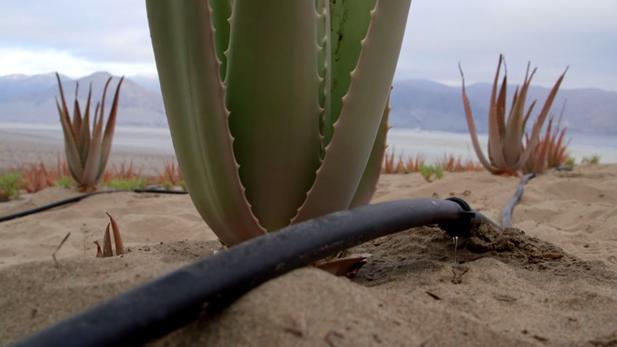atacamadesert
Latest

NASA tests life-detecting tools for Mars in the Atacama Desert
NASA wanted to find out whether the Mars 2020 rover can truly drill for samples and look for signs of life at the same time. So, a team of scientists spent the whole February testing tools using a practice rover called the KREX-2 in one of the driest places on Earth: the Atacama Desert. It's the perfect location to trial instruments NASA plans to use on Mars, since it's as dry as the red planet and under constant assault from ultraviolet radiation. Microbes in the Atacama live underground or inside rocks -- if there's life on Mars, NASA expects to find it in similar locations.

There may be water on Mars, but not much
Remember those weird dark streaks that NASA's Mars Reconnaissance Orbiter found last September? These recurring slope lineae (RSL), as they're called, were originally thought to contain liquid water. On Mars, liquid water would obviously be a huge deal because it means both potential source of life and potential resource. Well, it turns out that there isn't nearly as much water in those RSLs as astronomers had hoped and certainly none that's potable. What's more, new analysis has estimated that the amount of liquid surface water on Mars cannot exceed that of Earth's driest deserts.

MIT harvests fog to make water in one of the driest places on Earth
The climate is so arid in some corners of the globe that virtually any source of water is crucial to survival; even the fog rolling over the hills could make a big difference. MIT is well aware of this, and has been testing an advanced form of fog harvesting in Chile's Atacama Desert (one of the driest places on the planet) to see how the technology can help communities in very harsh regions. By taking inspiration from fog-collecting organisms like beetles and grass, researchers built large meshes that are 500 percent more efficient at turning fog into drinkable water than previous systems. In the Atacama experiment, they're good enough to produce half a gallon of water a day for every 10 square feet of mesh. That's not a lot, but it's sufficient for watering gardens of edible plants like aloe vera.

Plans for European Extremely Large Telescope approved, is indeed extremely large
We see a lot of "world's largest" claims around here. And this isn't even the first one for a telescope. But this one is actually for the world's biggest optical telescope, and that somehow makes it easier to grasp the magnitude of. At a cost of 1.1 billion Euros, it doesn't come cheap, but the European Extremely Large Telescope (ELT) has just been given the go ahead -- and truly lives up to its name. The mirror it uses will measure 39 meters across (four times that of typical mirrors,) comprising nearly 800 hexagonal pieces, and will swallow 12 times more light than the current biggest in existence. This, of course, means that it will be able to peep galaxies much farther away, and those in the process of formation in much more clarity. The project was approved by the European Southern Observatory council, which got the nod from ten countries in the continent, with others provisionally giving the thumbs up pending government backing. The telescope itself, however, will be located atop Chile's Cerro Armazones mountain in the Atacama Desert once completed.

Alma observatory captures stars being born, reports back on universe's awkward teenage years
A baby book for our cosmos? That'd be a happy by-product of the massive insight star-gazing scientists are set to glean from Alma -- the telescope responsible for ushering in a "new golden age of astronomy." The Atacama large millimeter/submillimeter array (as it's known in long form), located 3,000 meters above sea level on a Chilean plateau, goes beyond the voyeuristic powers of current optical telescopes, delivering detailed imagery of the dense gas clouds that birth baby stars. Why is this significant? Well, using the complex 20-antenna strong array (a total of 66 are planned), astronomers from North America, Europe and Japan will get a first-hand glimpse of the gaseous mix that was our universe a few hundred million years post-Big Bang. Consider the research a time-traveling peek back into the formative years of existence. Heady stuff, yes, but the array won't have its multiple, celestial-focused eyes trained solely on star nurseries; scientists from around the globe already plan on getting an up close look at the Sagittarius A black hole. When these "Pyramids of the 21st Century" finish construction in 2013, we'll be just one step closer to viewing the limits of our cosmic fishbowl.




